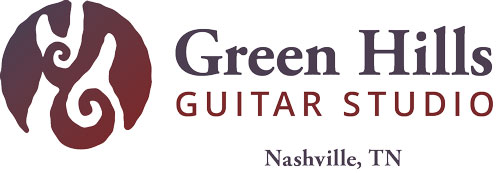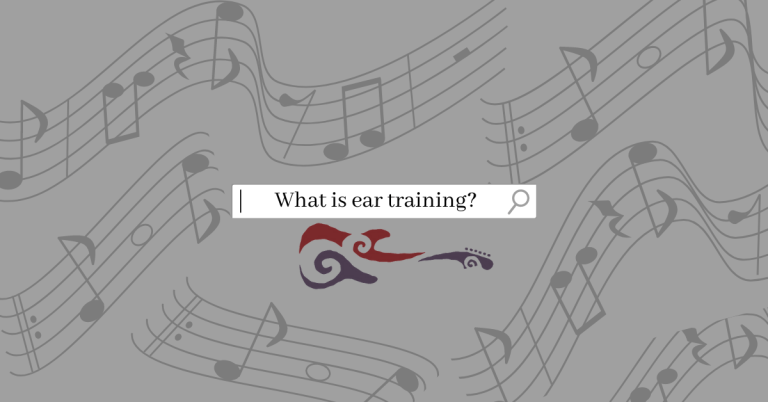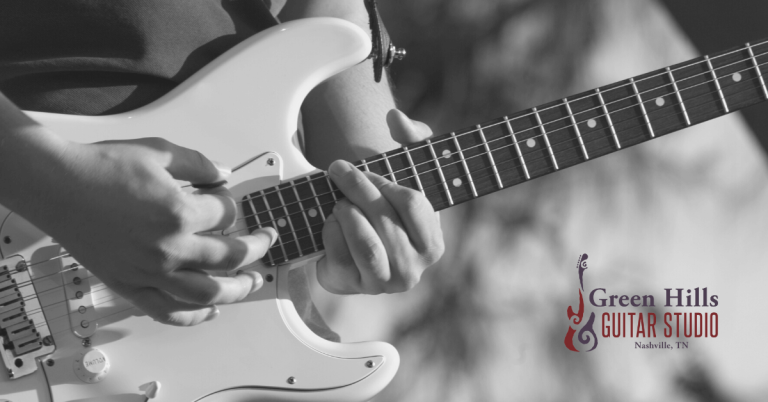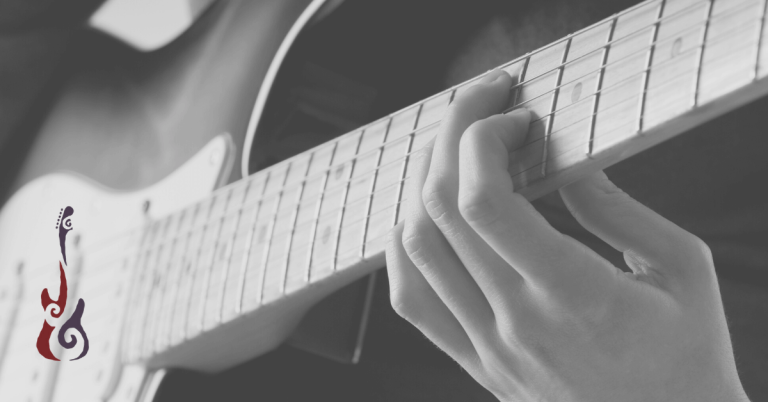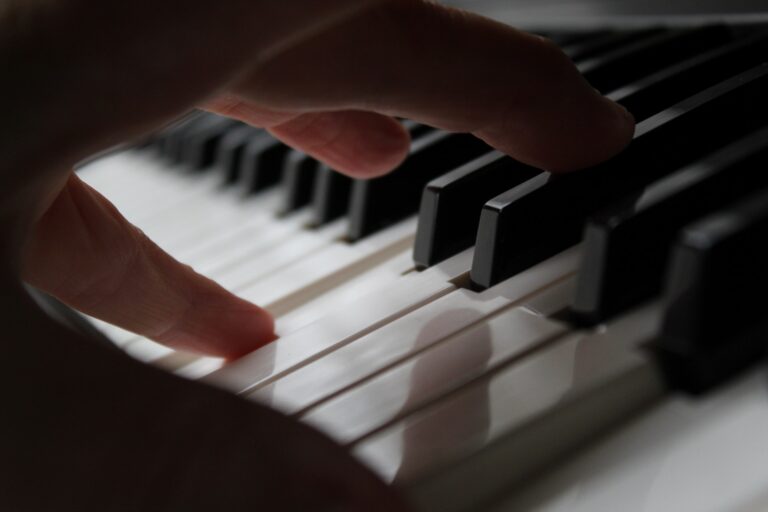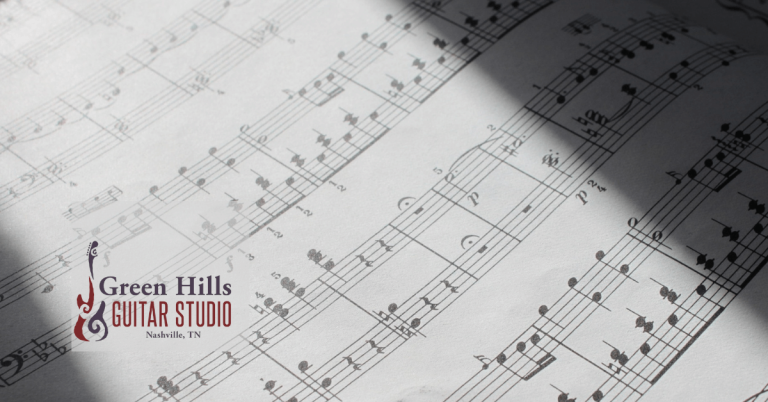Understanding Chord Progressions and Harmonic Structure
Chord progressions are the backbone of music, defining its emotional tone and structure. In this guide, we’ll explore their intricacies, empowering guitarists to master these essential musical elements.
Learn how to create captivating progressions that resonate with your audience. From understanding basic chord construction to analyzing harmonic structure, we’ll provide clear explanations and practical examples.
Join us as we discuss common chord progressions and learn how to analyze the secrets behind their dynamic impact. Understanding the music theory behind what you’re playing will make you a better musician and help you discover new creative possibilities. Let’s get into it!
Intervals and Chords: The Harmonic Blueprint
Intervals, the musical distances between two notes, are the essential building blocks of chords. Think of intervals as the raw materials from which chords are constructed. Each interval has a unique sound and character, contributing to a chord’s overall quality and emotion.
For example, the interval of a major third creates a bright and uplifting sound, while a minor third produces a more melancholy and reflective feel.
When intervals are combined to form chords, they shape a piece’s harmonic structure. Chords establish a foundation for harmony, influencing melodies, basslines, and overall mood. This is a huge aspect of establishing an emotional connection with listeners.
In essence, intervals are the building blocks of chord construction, and chords are the foundation of harmony. They are the musical materials that enable us to create musical landscapes. Mastering the relationship between intervals and chords is essential for musicians to unlock their powers of musical expression.
Studying examples from popular songs can help you grasp how intervals and chords create harmony. This will deepen your understanding of these crucial musical elements. Also, check out this video about “The Best Way to Embellish Chord Progressions on Guitar” from Green Hills Guitar Studio instructor Sam Farkas.
Getting to Know the Intervals: Playing with Tension and Release
Because the intervals of diatonic harmony are the building blocks of chords, it’s helpful to understand each one’s impact on the sound and where it wants to be resolved. So here’s a list of each interval, its emotional impact on the listener, and how it typically resolves:
Perfect Unison (P1)
- Emotional Impact: Creates a sense of stability and unity.
- Resolution: Often resolves to the tonic note or chord, providing a sense of finality and completion.
Minor Second (m2)
- Emotional Impact: Evokes tension, dissonance, or urgency.
- Resolution: It typically resolves upward to the major or minor third or downward to the tonic note, relieving tension and providing resolution.
Major Second (M2)
- Emotional Impact: Conveys movement, aspiration, or anticipation.
- Resolution: Often resolves upward to the major or minor third, adding a sense of forward momentum and direction to the music.
Minor Third (m3)
- Emotional Impact: Generates a sad or reflective mood.
- Resolution: Typically resolves downward to the root or tonic note, providing a sense of resolution and closure.
Major Third (M3)
- Emotional Impact: Elicits a bright, uplifting, or triumphant feeling.
- Resolution: Resolves downward to the root or tonic note, offering a sense of resolution and completeness.
Perfect Fourth (P4)
- Emotional Impact: Establishes a stable or peaceful atmosphere.
- Resolution: Commonly resolves downward to the major or minor third or upward to the perfect fifth, contributing to harmonic stability and motion.
Augmented Fourth/Diminished Fifth (A4/d5)
- Emotional Impact: Produces tension, unease, or mystery.
- Resolution: Typically resolves inward to the major or minor third or outward to the perfect fifth, providing resolution and release of tension.
Perfect Fifth (P5)
- Emotional Impact: Instills a sense of strength, stability, or power.
- Resolution: Often resolves downward to the major or minor third or upward to the major or minor sixth, reinforcing harmonic stability and progression.
Minor Sixth (m6)
- Emotional Impact: Creates a somber or reflective mood.
- Resolution: Typically resolves downward to the fifth or fourth, providing resolution and closure.
Major Sixth (M6)
- Emotional Impact: Conveys warmth, sweetness, or optimism.
- Resolution: Often resolves downward to the fifth or fourth or upward to the octave, contributing to harmonic stability and motion.
Minor Seventh (m7)
- Emotional Impact: Introduces a sense of bluesy or soulful emotion.
- Resolution: Typically resolves downward to the root or tonic note or upward to the octave, providing resolution and closure.
Major Seventh (M7)
- Emotional Impact: Evokes a dreamy, nostalgic, or ethereal atmosphere.
- Resolution: Often resolves downward to the sixth or fifth or upward to the octave, offering resolution and closure.
Perfect Octave (P8)
- Emotional Impact: Reinforces the sense of unity and completion.
- Resolution: Typically resolves downward to the root or tonic note, providing a sense of finality and completeness.
These assessments are generalizations. But they’re a good starting point for thinking about how resolutions contribute to harmonic movement and stability. The best players exploit these concepts to treat the listener to an emotional journey.
The Essential Role of Chord Progressions in Music
Chord progressions serve as the backbone of music, providing the harmonic structure and emotional framework for songs. They are essential to songwriters and musicians for several reasons:
- Establishing Mood and Emotion: Chord progressions are crucial in setting the mood and evoking emotions in a song. Different progressions can convey feelings of happiness, sadness, tension, or excitement, allowing songwriters to express their intended message or story effectively.
- Creating Musical Cohesion: Chord progressions help create cohesion within a song by providing a sense of continuity and flow. They establish a harmonic framework that ties together different song sections, such as verses, choruses, and bridges, creating a sense of unity and coherence.
- Supporting Melodies and Lyrics: Chord progressions provide a harmonic backdrop for melodies and lyrics to unfold. They create a musical context that supports and enhances the emotional impact of the lyrics, helping to convey the song’s message or narrative more effectively.
- Driving Rhythm and Groove: Chord progressions contribute to a song’s overall rhythm and groove, influencing its tempo, feel, and energy. Depending on the specific progression and arrangement, they can inspire movement and dance or create a sense of tension and anticipation.
Understanding Chords Through a Numerical Framework
In music theory, chord progressions are commonly represented using Roman numerals, a system deeply intertwined with the degrees of the major scale. This numerical framework offers you, as a musician, a universal language. It aids in your analysis and transposition of chord progressions across various keys.
Moreover, it serves as the foundation for the Nashville Number System, a widely used notation system among professional players.
In the Nashville Number System, chord progressions are expressed using Arabic numerals rather than Roman numerals, providing a more straightforward and versatile notation method. Each chord is assigned a number based on its position within the key, facilitating seamless communication between you and other musicians during rehearsals, studio sessions, and live performances.
This system enables quick chord changes and spontaneous adjustments, enhancing musical collaboration and efficiency. Understanding the relationship between chord progressions and the major scale’s numerical representation is crucial for you as a musician.
It empowers you to navigate harmonic landscapes precisely and efficiently through traditional Roman numerals or the Nashville Number System.
Learning Theory from Common Chord Progressions
Now, let’s explore some examples of common chord progressions used in popular music:
I-IV-V Progression:
- “Johnny B. Goode” by Chuck Berry: This classic rock ‘n’ roll anthem features the I-IV-V progression in the key of Bb (Bb – Eb – F), driving its energetic groove.
- “La Bamba” by Ritchie Valens: In this iconic Latin rock song, the I-IV-V progression in the key of C (C – F – G) infuses the music with an infectious rhythm and danceable flair.
I-V-vi-IV Progression:
- “Let It Be” by The Beatles: The sad yet hopeful vibe of this Beatles classic is enhanced by the I-V-vi-IV progression in the key of C (C – G – Am – F), creating a timeless anthem of resilience and acceptance.
- “Someone Like You” by Adele: Adele’s emotive ballad employs the I-V-vi-IV progression in the key of A (A – E – F#m – D), perfectly complementing the song’s heartfelt lyrics and soulful delivery.
I-IV-I-V Progression:
- “Earth Angel” by The Penguins: This doo-wop classic showcases the I-IV-I-V progression in the key of G (G – C – G – D), evoking nostalgia and romance with its dreamy harmonies and heartfelt sentiment.
- “Blue Moon” by The Marcels: With its lush vocal harmonies and doo-wop arrangement, “Blue Moon” features the I-IV-I-V progression in the key of F (F – Bb – F – C), capturing the essence of 1950s pop music.
ii-V-I Progression:
- “Autumn Leaves”: This jazz standard employs the ii-V-I progression in the key of G minor (Am7b5 – D7 – Gm7), showcasing the sophistication and elegance of jazz harmony in a melancholic yet beautiful melody.
- “Fly Me to the Moon” by Frank Sinatra: Frank Sinatra’s timeless rendition of this jazz classic features the ii-V-I progression in the key of C (Dm7 – G7 – Cmaj7), exuding romance and charm with its smooth vocals and lush orchestration.
I-vi-IV-V Progression:
- “Stand by Me” by Ben E. King: This timeless ballad follows the I-vi-IV-V progression in the key of A, offering a poignant portrayal of enduring love and friendship.
- “Can’t Help Falling in Love” by Elvis Presley: With its mesmerizing melody and heartfelt lyrics, this classic tune showcases the I-VI-IV-V progression in the key of C, capturing the essence of romance and devotion.
Minor Key Progressions:
Minor key progressions, such as i-iv-V or i-VI-VII-i, are prevalent across various music genres. They convey emotions ranging from melancholy to intensity, adding depth and complexity to compositions.
- “Hotel California” by Eagles: Set in the key of B minor, this iconic track employs the i-VI-VII-i progression, weaving a haunting tale of disillusionment and intrigue.
- “Für Elise” by Ludwig van Beethoven: Written in A minor, this classical masterpiece features the i-iv-V progression, captivating listeners with its elegance and expressive depth.
Modal Progressions:
Modal progressions, rooted in major scale modes like Dorian or Mixolydian, are common in modal jazz, folk, and progressive rock. These progressions can introduce distinct tonal colors that enrich the harmonic depth of compositions.
- “So What” by Miles Davis: The chord progression for “So What” by Miles Davis is a modal jazz progression known as a “modal vamp.” It typically features two chords: Dm7 (D minor seventh), representing the ii (two) chord in the D Dorian mode, and Ebm7 (E flat minor seventh), representing the iii (three) chord in the D Dorian mode. This progression creates a rich harmonic backdrop for improvisation, which is characteristic of modal jazz.
- “Kashmir” by Led Zeppelin: In “Kashmir” by Led Zeppelin, the main riff’s chord progression, featuring Dm(add9)/E, Dm(add9)/F, Dm(add9)/F#, and Dm(add9)/G, creates a modal quality. This adds mystery and grandeur, enhancing the song’s distinctive and hypnotic appeal.
These examples highlight how these common progressions are utilized in popular songs across different genres, showcasing their versatility and enduring appeal in creating memorable and emotionally resonant music.
Crafting Unique Chord Progressions: Tips and Techniques
Crafting your own chord progressions is a dynamic process that blends artistry with technical know-how, offering you a canvas to imprint your musical identity. To elevate your compositions, consider these practical strategies:
- Experiment with Different Chord Qualities and Extensions: Dive into the rich chord qualities and extensions palette. Play around with major, minor, dominant, and diminished chords, and venture into extended chords like sevenths, ninths, and elevenths to add layers of complexity and expression to your progressions.
- Explore Modal Interchange and Borrowed Chords: Infuse your progressions with unexpected flavors by borrowing chords from parallel keys or different modes. Modal interchange introduces intriguing harmonic variations, injecting your music with tension, intrigue, and depth.
- Draw Inspiration from Common Chord Progressions: Harness the power of established chord progressions from diverse musical genres. Use them as springboards to ignite your creativity, spawning new compositions while deepening your understanding of guitar harmony.
- Trust Your Ear and Intuition: Music is an extension of your inner self. Embrace your instincts and let your intuition guide you. Allow yourself the freedom to experiment, explore, and most importantly, enjoy the process of crafting your chord progressions.
The Coda
Studying the inner workings of chord progressions opens up a world of creative exploration for musicians and songwriters alike. This gives you options when it comes to shaping the emotional landscape and narrative of the music.
You can craft unique compositions that reflect your artistic vision by experimenting with various chord qualities, exploring modal interchange, and drawing inspiration from established progressions.
If you’re eager to enhance your guitar playing and songwriting skills, consider enrolling in private lessons at Green Hills Guitar Studio. Whether you’re in Nashville or online, our skilled instructors provide personalized instruction tailored to your learning objectives.
Reach out to Green Hills Guitar Studio today to schedule your private lessons and embark on a rewarding learning experience!
